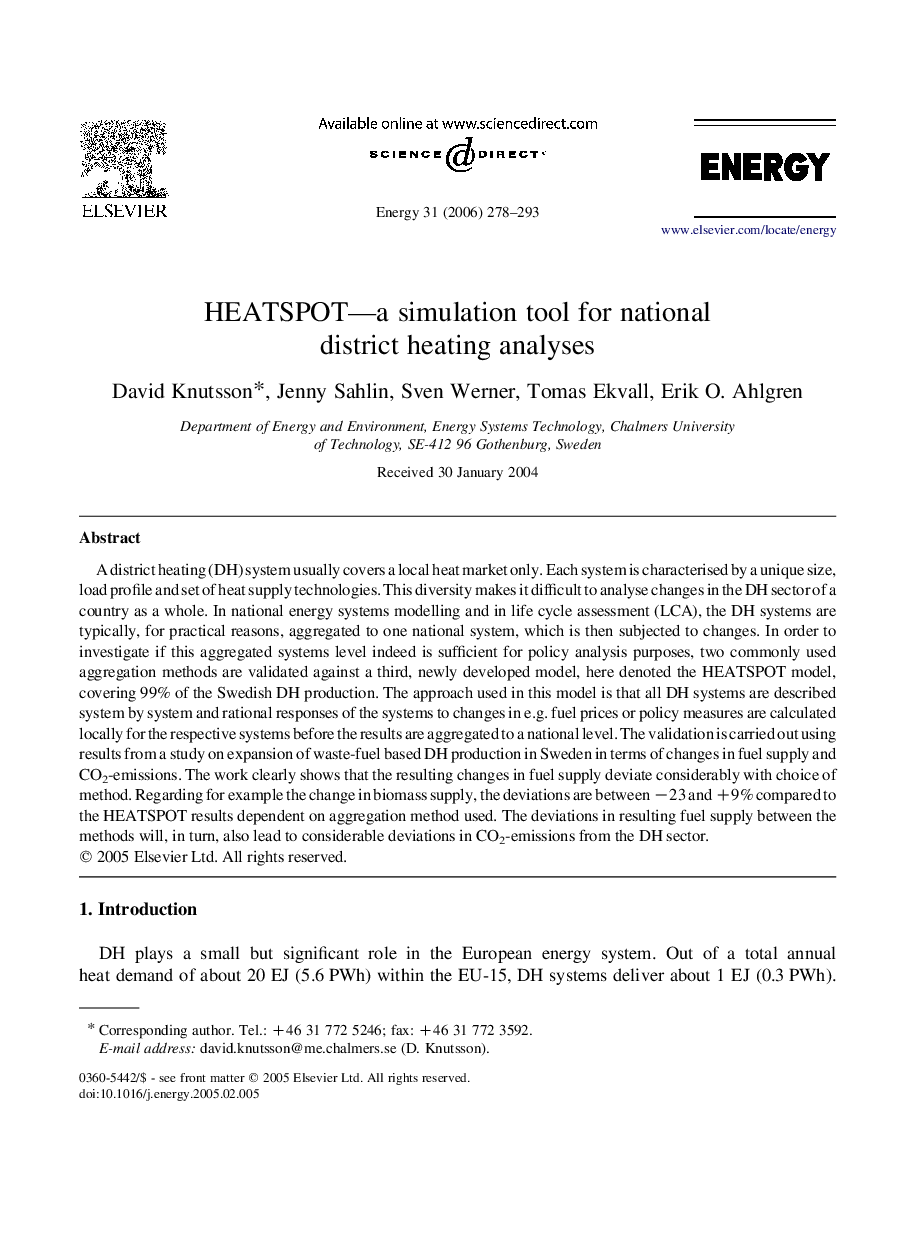| Article ID | Journal | Published Year | Pages | File Type |
|---|---|---|---|---|
| 1736570 | Energy | 2006 | 16 Pages |
A district heating (DH) system usually covers a local heat market only. Each system is characterised by a unique size, load profile and set of heat supply technologies. This diversity makes it difficult to analyse changes in the DH sector of a country as a whole. In national energy systems modelling and in life cycle assessment (LCA), the DH systems are typically, for practical reasons, aggregated to one national system, which is then subjected to changes. In order to investigate if this aggregated systems level indeed is sufficient for policy analysis purposes, two commonly used aggregation methods are validated against a third, newly developed model, here denoted the HEATSPOT model, covering 99% of the Swedish DH production. The approach used in this model is that all DH systems are described system by system and rational responses of the systems to changes in e.g. fuel prices or policy measures are calculated locally for the respective systems before the results are aggregated to a national level. The validation is carried out using results from a study on expansion of waste-fuel based DH production in Sweden in terms of changes in fuel supply and CO2-emissions. The work clearly shows that the resulting changes in fuel supply deviate considerably with choice of method. Regarding for example the change in biomass supply, the deviations are between −23 and +9% compared to the HEATSPOT results dependent on aggregation method used. The deviations in resulting fuel supply between the methods will, in turn, also lead to considerable deviations in CO2-emissions from the DH sector.
